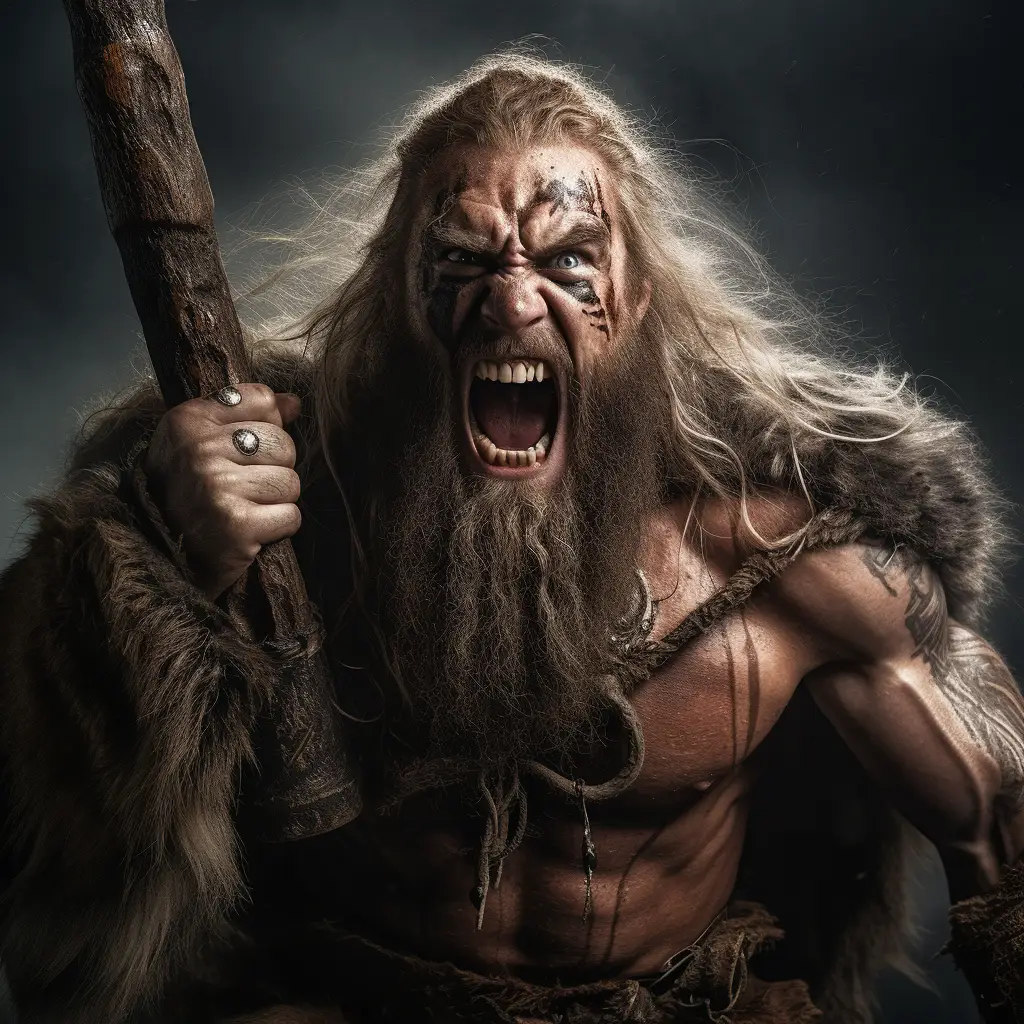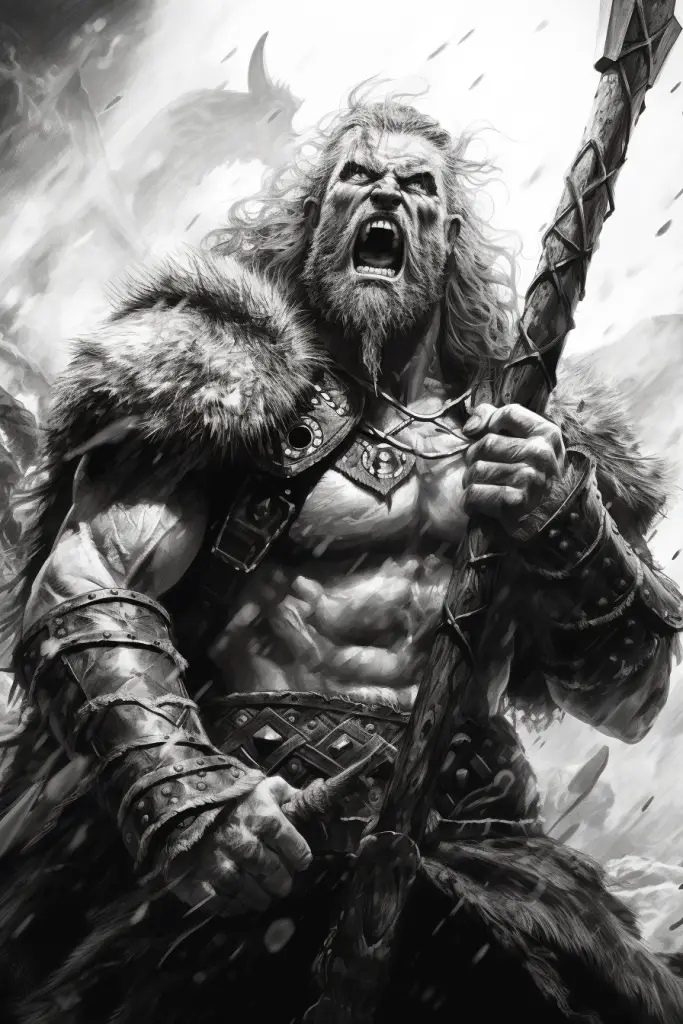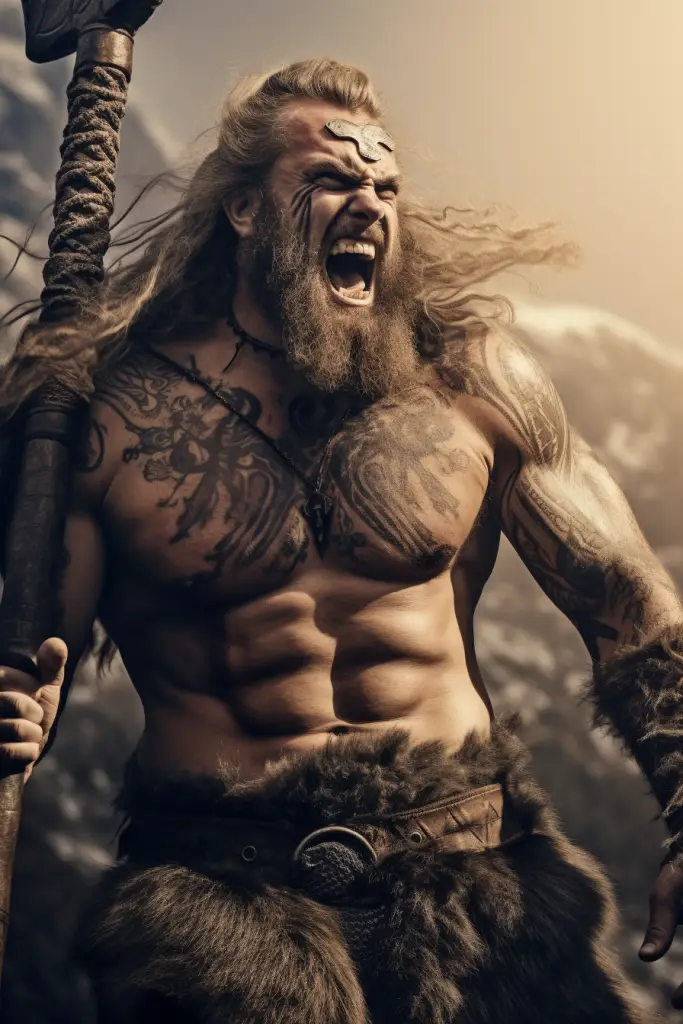Viking berserkers were legendary warriors who fought with a fierce and almost uncontrollable rage in battle. These warriors were often associated with Odin, the Norse god of war, and were believed to possess a trance-like state known as “berserkergang,” where they would exhibit extraordinary strength, endurance, and fearlessness.
The term “berserker” is derived from Old Norse words meaning “bear-shirt” or “bear-skin,” suggesting that these warriors may have worn bear hides during battle. They were known for entering a state of frenzy, often described as biting their shields, howling, and exhibiting behaviors that seemed beyond human capabilities.
Theories about the berserker state include the consumption of hallucinogenic substances or achieving an altered mental state through ritualistic practices. However, the exact methods are unclear, and historical accounts vary.
In battle, berserkers were feared for their seemingly supernatural strength and lack of regard for personal safety. They were often employed as shock troops, charging into the front lines with great aggression. Despite their fearsome reputation, it’s essential to note that berserkers were not invincible, and their ferocity in battle didn’t guarantee victory.
The role and existence of berserkers in Viking society remain topics of debate among historians, with some considering them a symbol of bravery and others viewing them as a product of myth and exaggeration. Regardless, the concept of the berserker has left an enduring mark on popular culture and the portrayal of Viking warriors.



